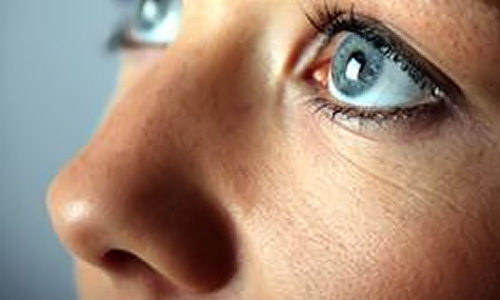The human body produces chemical cues that communicate gender to members of the opposite sex, according to researchers who report their findings in the Cell Press journal Current Biology on May 1. Whiffs of the active steroid ingredients (androstadienone in males and estratetraenol in females) influence our perceptions of movement as being either more masculine or more feminine. The effect, which occurs completely without awareness, depends on both our biological sex and our sexual orientations.
“Our findings argue for the existence of human sex pheromones,” says Wen Zhou of the Chinese Academy of Sciences. “They show that the nose can sniff out gender from body secretions even when we don’t think we smell anything on the conscious level.”
Earlier studies showed that androstadienone, found in male semen and armpits, can promote positive mood in females as opposed to males. Estratetraenol, first identified in female urine, has similar effects on males. But it wasn’t clear whether those chemicals were truly acting as sexual cues.
In the new study, Zhou and her colleagues asked males and females, both heterosexual and homosexual, to watch what are known as point-light walkers (PLWs) move in place on a screen. PLWs consist of 15 dots representing the 12 major joints in the human body, plus the pelvis, thorax, and head. The task was to decide whether those digitally morphed gaits were more masculine or feminine.
Individuals completed that task over a series of days while being exposed to androstadienone, estratetraenol, or a control solution, all of which smelled like cloves. The results revealed that smelling androstadienone systematically biased heterosexual females, but not males, toward perceiving walkers as more masculine. By contrast, the researchers report, smelling estratetraenol systematically biased heterosexual males, but not females, toward perceiving walkers as more feminine.
Interestingly, the researchers found that homosexual males responded to gender pheromones more like heterosexual females did. Bisexual or homosexual female responses to the same scents fell somewhere in between those of heterosexual males and females.
“When the visual gender cues were extremely ambiguous, smelling androstadienone versus estratetraenol produced about an eight percent change in gender perception,” Zhou says, a statistically very significant effect.
“The results provide the first direct evidence that the two human steroids communicate opposite gender information that is differentially effective to the two sex groups based on their sexual orientation,” the researchers write. “Moreover, they demonstrate that human visual gender perception draws on subconscious chemosensory biological cues, an effect that has been hitherto unsuspected.”
Story Source:
The above story is based on materials provided by Cell Press.





